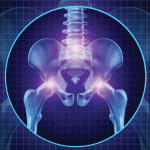PHILADELPHIA—The definition of hypermobility syndrome has broadened considerably in the last 40 years, said Rodney Grahame, MD, a consultant rheumatologist at the Hypermobility Clinics of the University College London Hospitals and at the Great Ormond Street Children’s Hospital in London. However, the condition is still under-recognized. In a group of 500 consecutive patients presenting at his London rheumatology clinic, 45% showed features of the joint hypermobility syndrome (JHS) phenotype. Based on those numbers, Dr. Grahame estimated that “for every one person in England who is diagnosed by a rheumatologist as having hypermobility syndrome, there are probably 19 that aren’t yet diagnosed.”
Dr. Grahame, a world-renowned expert on hypermobility syndrome, was one of a trio of presenters in this ARHP-sponsored session, “Recognition of Joint Hypermobility Syndrome and Its Rehabilitation in Adults and Children,” presented here at the 2009 ACR/ARHP Annual Scientific Meeting. [Note: This session was recorded and is available via ACR SessionSelect at www.rheumatology.org.] Together, they offered a comprehensive overview of the current thinking and management strategies for this condition.
Expanding Definitions
In the past, rheumatologists measured hypermobility using the nine-point Beighton Score, which assesses range of motion in the knees, elbows, thumbs, and spine. In fact, said Dr. Grahame, excessive range of motion is quite easy to spot even without employing the Beighton. “All you need to do is ask patients to stretch their fingers, and you can see immediately the striking changes, as the hands curve upwards toward the sky,” he said. Nevertheless, clinicians should also assess shoulders, cervical spine, and pharyngeal joints. More importantly, Dr. Grahame told his audience, “We should be aware that nonarticular symptoms are common.” Work in the last two decades has shown the importance of other components, including stretchy skin and distinctive scarring patterns (a result of collagen protein defects), functional disorders of the gastrointestinal tract, and neurophysiological defects such as joint proprioceptive impairment.
The more inclusive Brighton Criteria, which feature the Beighton Score as both major and minor criteria, have been used since 1998 to assess this complex syndrome. Clinicians are also challenged to distinguish JHS from other disorders, such as osteogenesis imperfecta, Marfan syndrome, and Ehlers-Danlos syndrome, which all have overlapping features.
Dr. Grahame described the three main categories of the clinical presentation of hypermobility syndrome:
- Musculoskeletal tissue laxity, including noninflammatory joint and spinal pain, dislocations, soft tissue injuries, and problems with supporting structures such as the pelvic floor;
- Pain amplification, which can lead to kinesiphobia and resultant muscle deconditioning; and
- Psychosocial sequelae. Many of these patients, said Dr. Grahame, suffer from anxiety, depression, obesity, isolation, and anger “Often, the anger is directed toward the medical professionals who have been unable to help them,” he noted.
Underappreciation of the condition has had deleterious consequences to those who suffer from it. In 2001, Dr. Grahame found that, among 319 U.K. rheumatologists, half were skeptical about the impact of hypermobility syndrome on patients’ lives.1 Clinicians do not perceive these patients as severely physically disabled because their musculoskeletal systems are largely intact. “They have a set of muscles, but they cannot use them because of the pain,” Dr. Grahame said. The patients may have additional overlying medical conditions that cause other problems.


